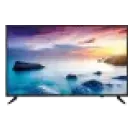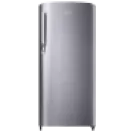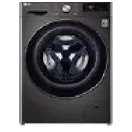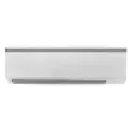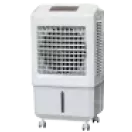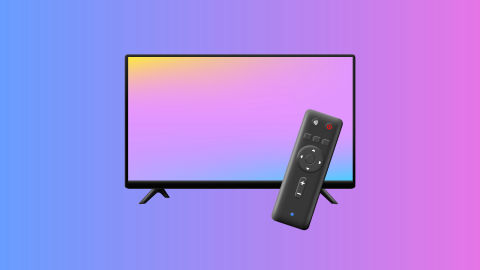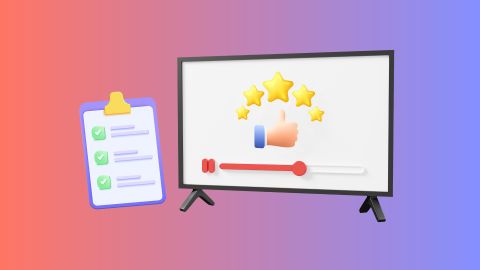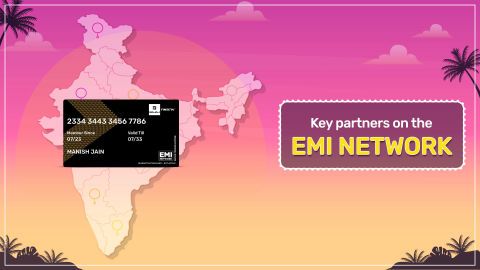Browse a wide range of inverter batteries on Bajaj Mall. Choose from top brands, compare features, and select the ideal model for your needs. Once you have made your decision, visit any of Bajaj Finserv's 1.5 lakh partner stores across 4,000 cities in India to complete your purchase. With Bajaj Finserv's financing options, you can buy your fridges on Easy EMIs, making the purchase more affordable and convenient. Enjoy a seamless shopping experience and bring home a high-quality refrigerator without worrying about the upfront cost.
3 min
3-Jan-2025
An inverter converts DC (Direct Current) power from a battery or solar panels into AC (Alternating Current) power, which is used by most household appliances. It ensures a continuous power supply during outages, keeping essential devices operational and homes running smoothly.
Browse a wide range of inverter batteries on Bajaj Mall. Choose from top brands, compare features, and select the ideal model for your needs. Once you have made your decision, visit any of Bajaj Finserv's 1.5 lakh partner stores across 4,000 cities in India to complete your purchase. With Bajaj Finserv's financing options, you can buy your fridges on Easy EMIs, making the purchase more affordable and convenient. Enjoy a seamless shopping experience and bring home a high-quality refrigerator without worrying about the upfront cost.
Browse a wide range of inverter batteries on Bajaj Mall. Choose from top brands, compare features, and select the ideal model for your needs. Once you have made your decision, visit any of Bajaj Finserv's 1.5 lakh partner stores across 4,000 cities in India to complete your purchase. With Bajaj Finserv's financing options, you can buy your fridges on Easy EMIs, making the purchase more affordable and convenient. Enjoy a seamless shopping experience and bring home a high-quality refrigerator without worrying about the upfront cost.
Introduction to inverter batteries
Inverter batteries are essential components in power backup systems, storing energy to ensure uninterrupted electricity during power cuts. They act as reservoirs of electrical energy, supplying power to connected devices when the main grid fails. Designed to handle frequent charge and discharge cycles, these batteries play a critical role in maintaining the efficiency and longevity of an inverter system.
Modern inverter batteries come in various types, each suited for different energy needs and usage patterns. They are commonly used in homes, offices, and small businesses to power essential appliances such as fans, lights, computers, and even refrigerators. When paired with reliable inverters like the Luminous Zelio 1100 inverter, they ensure optimal performance, energy efficiency, and consistent power supply. Understanding the features and types of inverter batteries is key to selecting the right one for your needs.
Firstly, battery capacity, measured in ampere-hours (Ah), determines how long it can provide backup power. A higher Ah rating generally means a longer backup duration. Secondly, the battery's efficiency during charge and discharge cycles significantly impacts performance. A good battery should retain its efficiency even after repeated cycles.
Durability is another critical factor. High-quality batteries are built to withstand frequent power cuts and heavy load conditions without compromising performance. Proper heat management also plays a vital role, as overheating can reduce the lifespan of an inverter battery.
Maintenance requirements vary depending on battery type. While lead-acid batteries need regular water top-ups, lithium-ion batteries are virtually maintenance-free. Additionally, safety features such as overcharge protection, short-circuit prevention, and durable casing are crucial for long-term reliability.
Compatibility with your inverter is equally important. Pairing your inverter with a suitable battery, like the Smarten solar inverter, ensures optimal performance and energy efficiency.
Lastly, warranty coverage offers peace of mind. A good inverter battery should come with a reliable warranty and service support for hassle-free usage. Investing in a quality inverter battery not only enhances your backup power experience but also ensures long-lasting performance and energy savings.
Bajaj Finserv offers Easy EMI options on a ton of electronics, gadgets, home appliances and more. You simply need to visit one of our partner stores, select the model of your choice and convert the cost into Easy EMIs. You can choose to repay it in a convenient tenure of up to 60 months. This financing solution from Bajaj Finserv is available on 1 million products.
Modern inverter batteries come in various types, each suited for different energy needs and usage patterns. They are commonly used in homes, offices, and small businesses to power essential appliances such as fans, lights, computers, and even refrigerators. When paired with reliable inverters like the Luminous Zelio 1100 inverter, they ensure optimal performance, energy efficiency, and consistent power supply. Understanding the features and types of inverter batteries is key to selecting the right one for your needs.
What is an inverter battery
- An inverter battery stores electrical energy and supplies it to an inverter during power outages.
- It converts stored DC (Direct Current) power into AC (Alternating Current) power for household appliances.
- These batteries are designed to handle deep discharge cycles efficiently without significant loss of capacity.
- Commonly used inverter batteries include lead-acid and lithium-ion types, each offering unique advantages.
- UPS inverters often rely on inverter batteries to ensure seamless power transition during outages.
- Factors like battery capacity (measured in Ah) and compatibility with inverters play a crucial role in determining performance.
- 700-watt inverters are frequently paired with inverter batteries for small-scale power backup solutions.
- Regular maintenance, including proper water top-ups and terminal checks, extends the battery’s lifespan.
- Inverter batteries also contribute to energy efficiency by minimising power losses during energy conversion and supply.
How do inverter batteries work
- Inverter batteries store DC (Direct Current) energy, usually from the grid or solar panels.
- When the main power supply is available, the inverter charges the battery, converting AC (Alternating Current) into DC for storage.
- During power outages, the stored DC power is converted back into AC by the inverter to power electrical appliances.
- Charge controllers in modern inverters prevent overcharging and deep discharging, preserving battery life.
- The battery’s capacity, usually measured in ampere-hours (Ah), determines how long it can supply power during outages.
- Luminous inverter 1050VA with 150Ah battery is an excellent example of an efficient inverter-battery combination.
- Battery efficiency is influenced by factors like temperature, charge cycles, and proper maintenance.
- The inverter-battery system ensures that critical appliances keep running smoothly without fluctuations or interruptions.
Types of inverter batteries: lead-acid vs. lithium-ion
- Lead-acid batteries: Lead-acid batteries are the most commonly used for home inverters due to their affordability and wide availability. However, they require regular maintenance, including water refills, and have a shorter lifespan compared to lithium-ion batteries. These batteries are suitable for moderate power requirements.
- Lithium-ion batteries: Lithium-ion batteries, on the other hand, are lightweight, compact, and highly efficient, offering a longer lifespan with minimal maintenance. Although they have a higher initial cost, they provide better long-term value and are ideal for high-capacity power needs.
- Lead-acid batteries are better suited for budget-friendly, short-term solutions, while lithium-ion batteries are perfect for modern, long-lasting, and energy-efficient inverter systems.
- Choosing between these types depends on factors such as usage patterns, budget, and long-term energy goals.
Key features of a good inverter battery
A reliable inverter battery is essential for ensuring an uninterrupted power supply and optimising the overall performance of your inverter system. The following features define a high-quality inverter battery:Firstly, battery capacity, measured in ampere-hours (Ah), determines how long it can provide backup power. A higher Ah rating generally means a longer backup duration. Secondly, the battery's efficiency during charge and discharge cycles significantly impacts performance. A good battery should retain its efficiency even after repeated cycles.
Durability is another critical factor. High-quality batteries are built to withstand frequent power cuts and heavy load conditions without compromising performance. Proper heat management also plays a vital role, as overheating can reduce the lifespan of an inverter battery.
Maintenance requirements vary depending on battery type. While lead-acid batteries need regular water top-ups, lithium-ion batteries are virtually maintenance-free. Additionally, safety features such as overcharge protection, short-circuit prevention, and durable casing are crucial for long-term reliability.
Compatibility with your inverter is equally important. Pairing your inverter with a suitable battery, like the Smarten solar inverter, ensures optimal performance and energy efficiency.
Lastly, warranty coverage offers peace of mind. A good inverter battery should come with a reliable warranty and service support for hassle-free usage. Investing in a quality inverter battery not only enhances your backup power experience but also ensures long-lasting performance and energy savings.
Bajaj Finserv offers Easy EMI options on a ton of electronics, gadgets, home appliances and more. You simply need to visit one of our partner stores, select the model of your choice and convert the cost into Easy EMIs. You can choose to repay it in a convenient tenure of up to 60 months. This financing solution from Bajaj Finserv is available on 1 million products.
Explore inverters on EMI with Bajaj Finserv
For those in search of a dependable inverter, Bajaj Mall offers a wide selection to meet your energy needs. After reviewing product specifications, you can visit your nearest Bajaj Finserv partner store to finalise your choice. With financing options from Bajaj Finserv, owning an inverter becomes stress-free, allowing you to spread costs over time. Choose a repayment tenure that suits your budget and enjoy affordable monthly instalments. Bajaj Finserv also provides financing solutions across a wide range of electronics.Benefits of shopping with Bajaj Finserv
- Affordable pricing: Get cost-effective deals on inverters at Bajaj Finserv partner stores, ensuring your purchase stays budget-friendly.
- Easy EMI: Buying an inverter has never been easier. Bajaj Finserv offers flexible repayment plans, letting you manage costs conveniently with Easy EMI.
- Zero down payment: Eliminate upfront expenses. Select inverter models come with zero down payment options, so you can pay gradually without an initial financial burden.
- Wide range and accessibility: Explore a comprehensive collection of inverters across Bajaj Finserv partner stores and find the perfect model for your home.
- Special deals and cashback: Enjoy exclusive offers, discounts, and cashback benefits when you purchase an inverter.
- Complimentary home delivery: Selected inverter models come with free home delivery, ensuring a seamless and hassle-free shopping experience.
Inverters
Brands
- Luminous inverters
- Livguard inverters
- V-guard inverters
- Genus inverters
- Su-kam inverters
- Sine Wave inverters
- 1 KVA inverters
- 2 KVA inverters
- 5 KVA inverters
- 12V inverters
- 900 VA inverters
- 1500 watt inverters
- UPS inverters
- Solar Inverters
- Grid inverters
- Sine Wave inverters
- Square wave inverters
- Hybrid inverter
- UPS Vs inverters
- Exide Vs Luminous inverters
- Inverter buying guide
- Choose inverter for home
- Best solar inverters for home
Bajaj Finserv App for all your financial needs and goals
Trusted by 50 million+ customers in India, Bajaj Finserv App is a one-stop solution for all your financial needs and goals.
You can use the Bajaj Finserv App to:
Apply for loans online, such as Instant Personal Loan, Home Loan, Business Loan, Gold Loan, and more.
You can use the Bajaj Finserv App to:
Apply for loans online, such as Instant Personal Loan, Home Loan, Business Loan, Gold Loan, and more.
- Explore and apply for co-branded credit cards online.
- Invest in fixed deposits and mutual funds on the app.
- Choose from multiple insurance for your health, motor and even pocket insurance, from various insurance providers.
- Pay and manage your bills and recharges using the BBPS platform. Use Bajaj Pay and Bajaj Wallet for quick and simple money transfers and transactions.
- Apply for Insta EMI Card and get a pre-approved limit on the app. Explore over 1 million products on the app that can be purchased from a partner store on Easy EMIs.
- Shop from over 100+ brand partners that offer a diverse range of products and services.
- Use specialised tools like EMI calculators, SIP Calculators
- Check your credit score, download loan statements, and even get quick customer support—all on the app.
Frequently asked questions
What is the primary function of an inverter battery?
The primary function of an inverter battery is to store electrical energy and supply it to the inverter when the main power supply fails. It converts stored DC power into AC power through the inverter, ensuring a continuous power supply to essential appliances during outages.
How long does an inverter battery last?
The lifespan of an inverter battery typically ranges from 3 to 5 years, depending on the type, usage patterns, and maintenance. Factors such as regular water top-ups (for lead-acid batteries), avoiding deep discharges, and ensuring proper ventilation can significantly extend battery life.
What is the difference between lead-acid and lithium-ion inverter batteries?
Lead-acid batteries are cost-effective and widely used but require regular maintenance and have a shorter lifespan. In contrast, lithium-ion batteries are more efficient, have a longer life span, and require minimal maintenance, although they come with a higher initial cost.
How can I increase the lifespan of my inverter battery?
You can extend the lifespan of your inverter battery by ensuring regular maintenance, avoiding overcharging or deep discharging, keeping terminals clean, and placing the battery in a well-ventilated area. Using compatible inverters and performing periodic performance checks also helps.
Can an inverter battery be used without a solar system?
Yes, an inverter battery can function without a solar system. It charges using grid electricity and supplies backup power during outages. However, integrating a solar system enhances efficiency, reduces electricity costs, and makes the setup more sustainable.
Show More
Show Less
